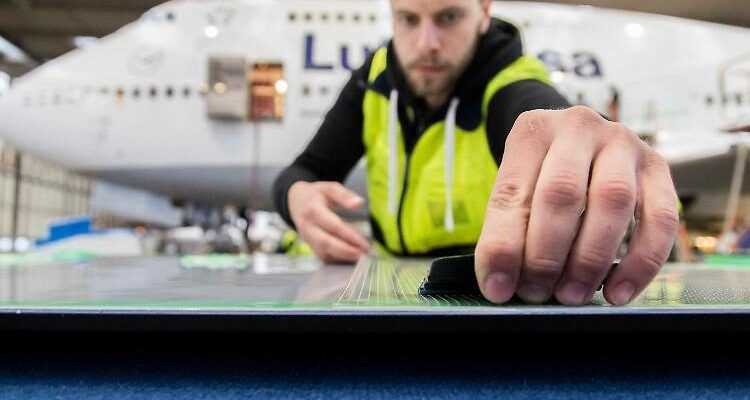Monday, May 03, 2021
Fuel-saving supplement
Lufthansa’s freighters get shark skin
Nature as a role model: Lufthansa gives its cargo planes a ribbed skin in order to significantly reduce air friction – and lower C02 emissions. The first aircraft are to be covered in the next year.
Lufthansa jets are to save fuel in the future with the help of a new type of surface film. Both companies reported that the surface developed jointly by BASF and Lufthansa Technik was modeled on the ribbed skin of sharks. With the better aerodynamics, the air friction can be reduced by about one percent, so that annual savings of 3700 tons of kerosene are possible when used on the entire Lufthansa freighter fleet. This would avoid the emission of around 11,700 tons of climate-damaging carbon dioxide, which corresponds to around 48 cargo flights from Frankfurt to Shanghai.
Starting next year, all Lufthansa Cargo freighters, ten Boeing 777 jets, are to be covered with the new film. It is about the lower half of the hull up to the side surfaces, where there are no disruptive rows of windows on freighters. A spokesman for Lufthansa Technik reported that parts of the wing would also be covered.
In total, it is about 800 square meters of shark skin per aircraft. So far, the film has been tested on around 500 square meters on the lower fuselage of a Boeing 747 jumbo. Lufthansa Technik had also obtained approval for this from the European flight safety authority EASA.
Lufthansa Technik and BASF intend to further develop the new technology in the direction of additional aircraft types and even larger areas. In the first model calculations, up to three percent of CO2 emissions could be avoided with shark skin technology, the companies explained.
.
